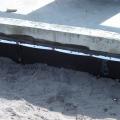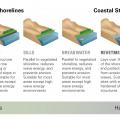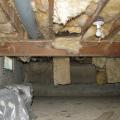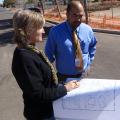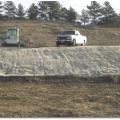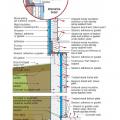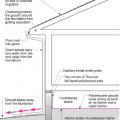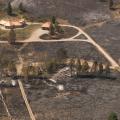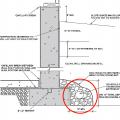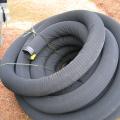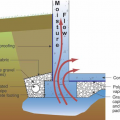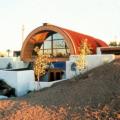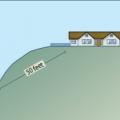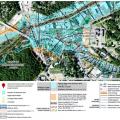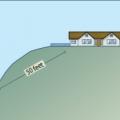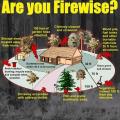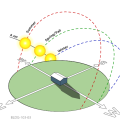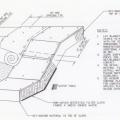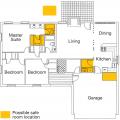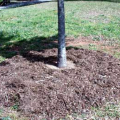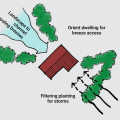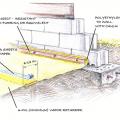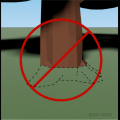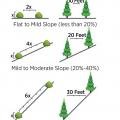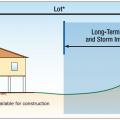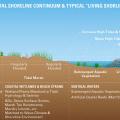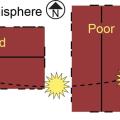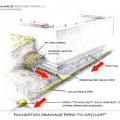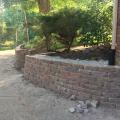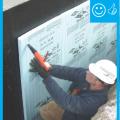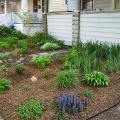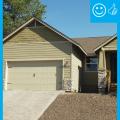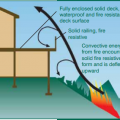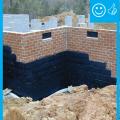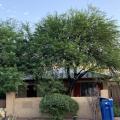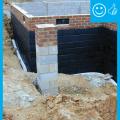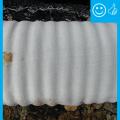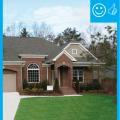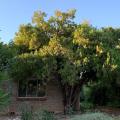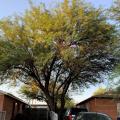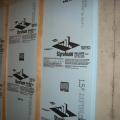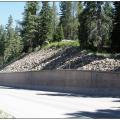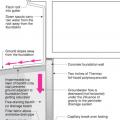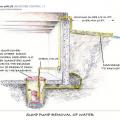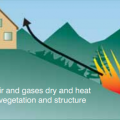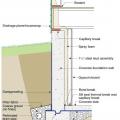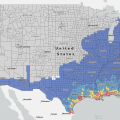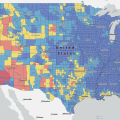Showing results 1 - 100 of 146
Impervious surfaces like patio slabs, sidewalks, and driveways that are within 10 feet of the home should slope away from the house.
A continuum of green (soft) to grey (hard) shoreline stabilization techniques used to mitigate the effects of erosion
A dry hydrant is a pipe a homeowner can have installed in a natural water source on their rural property to provide easy access to the water by firefighting crews.
A FIRM will identify specific SFHAs (colored and hatched areas) and localized BFEs (wavy black lines)
A professional tree survey should be made prior to construction to assess the health and usefulness of each tree surrounding the future home and to determine which trees on a building site should be preserved.
An erosion control blanket protects the slope from erosion and provides favorable conditions for bank revegetation
Careful landscaping can preserve roof-top solar exposure and provide shading to help control solar gain through windows.
Comprehensive water management features include a capillary break (≥ 6-mil polyethylene sheeting) at all crawlspace floors
Create defensible space against wildfires by limiting fire fuels in the immediate, intermediate, and extended zones around the home
Defensible space and ignition resistant building materials saved this home from a wildland fire that destroyed the neighboring home in the foreground
Dry wells are underground tanks that store water to percolate or drain slowly to another site or sewer.
Dune erosion caused by the combination of a hurricane and a nor’easter in Ocean City, New Jersey
Example of an earth-sheltered home in hot climate Tempe, AZ uses the cooling properties of the ground to decrease cooling costs
Example of setback from wildland vegetation Image title: Homes sited on hills in wildfire prone areas should be set back at least 50 feet from downslope wildland vegetation.
Flood hazard risk for a particular location can be assessed by viewing flood maps on the NFHL Viewer
Good water management practices like sloping grade away from house, and installing gutters, perimeter drain pipe, a capillary break, and free-draining soils or drainage mat protect the foundation from water saturation.
Gutters and downspouts direct rainwater down and away from buildings to keep building walls and foundations drier
Homes sited on hills in wildfire prone areas should be set back at least 50 feet from downslope wildland vegetation.
In hot climate zones, shade building surface with vegetation for passive cooling.
In the middle of summer, the sun shines most directly on the east and west sides of a house, while in winter it shines mostly from the south.
Installation of an erosion control blanket to minimize soil loss on sloped ground that has no established vegetation
Keep mulch away from trunk of the tree to allow air circulation at the root collar.
Landscape trees and shrubs to funnel cooling breeze towards a home in hot climate zones.
Large deciduous trees provide heat-blocking shade to the walls and windows of this house.
Leave the soil level around an existing trunk as is (left); do not increase soil height (center) or remove soil in the root zone (right).
Minimum horizontal clearance between trees and plants on various slopes for wildfire resistance
On ocean-front lots set the home as far back on the lot as possible, preferably with a protective dune between structures and shoreline.
Patio slabs, porch slabs, walks, and driveways sloped ≥ 0.25 in. per ft. away from home to edge of surface, or 10 ft., whichever is less
Planting deep-rooted native grasses and shrubs on the banks of shorelines can help reduce the effects of erosion on sandy slopes
Proper gutter and downspout system terminates with final grade sloping away from the home
Recommended tree spacing for wildfire resistance within the three defensible space zones (Source: Preparing Homes for Wildfire
Retaining walls can prevent erosion and landslides and maintain access to critical infrastructure
Right - Basement slab with a capillary break of either gravel or a drainage mat.
Right - Below-grade concrete has been properly sealed against moisture and is now having insulation installed.
Right - Dense vines growing on a covered trellis along the west side of this home provide effective shade for the wall and windows and create a shaded, protected walkway and outdoor seating area.
Right - Lawn clippings were placed evenly to create a layer of mulch around the garden.
Right - Mulch covers the empty spaces in this garden, retaining moisture, moderating temperatures, and providing nutrients as it decomposes.
Right - This builder preserved the trees around this new urban-infill home, providing excellent shading in the summer.
Right - This tree has been given space around the roots to allow for proper growth and expansion of the tree over time.
Right – Polyethylene sheeting vapor barrier is installed and sealed to the crawlspace walls with mastic
Right – The canopy of this tree is high enough to allow views out the windows of this home while providing excellent shade to walls, windows, and roof.
Right – The drain slopes away from the foundation and terminates at the proper distance
Right – The drain tile connects to a sump pump which will pump water away from the foundation
Right – The drain tile is installed along the bottom of the entire foundation footing
Right – The drain tile is wrapped in fabric which will prevent it clogging with debris
Right – The insulated concrete forms that are below-grade have a damp-proof coating to prevent moisture seeping into the foundation
Right – This shrub has been pruned to allow views out the windows of this home while providing shade to walls, windows, and roof.
Right – This tree shades walls, windows, roofs, and grounds for two adjacent homes.
Right – Trimming tree branches a minimum of 10 feet from the house or any attached structures reduces the risk of home ignition.
Right – Trimming tree canopies a minimum of 10 feet from the house reduces the risk of home ignition.
Riprap is used as a common erosion control technique along beachfronts and streambanks
Soil types include sand, silt, and clay- the more sand, the more quickly the soil drains.
Super-heated air and gases from wildfires will dry and heat the fuel, both vegetation and structures, in the path of the oncoming, uphill-moving fire.
The below-grade wall assembly includes dampproofing, draining details, and insulation.
The pilings for this building are showing signs of failure due to a poor siting decision to locate the home too close to the surf.

